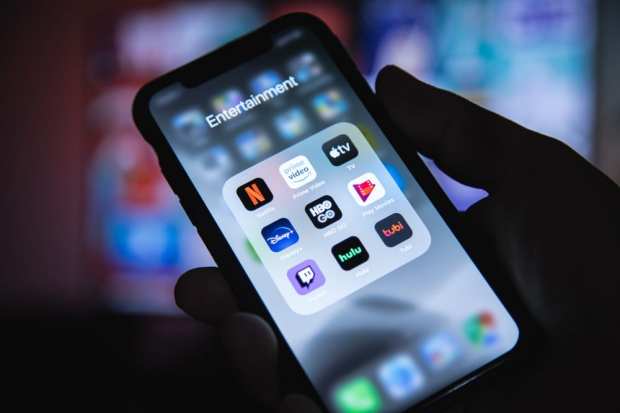What’s Behind Apple One’s Bundled Subscription Move?

The pandemic has made us a world populated by consumers – of content.
And where the consumer’s appetite for the daily fix of movies, news, shoes and games only grows, the subscription economy is poised to grow in lockstep.
In an interview with Karen Webster, Brian Bogosian, CEO at sticky.io, an integrated eCommerce subscription management and recurring billing platform, said that Apple’s continued push into subscriptions is only one example of the allure of subscription eCommerce, and where it is headed.
Apple, of course, has reportedly been readying subscription bundles via “Apple One,” which will bundle a range of services in tiered offerings at yet-to-be-named price points. Picture, then, Apple Music and Apple TV paired as a bundle on offer to iPhone and iMac users.
The economics may make sense, as Bloomberg noted that an a-la-carte grouping of the tech giant’s major offerings would cost about $45, and bundled subscriptions can shave several dollars off that amount.
The longer-term goal for Apple is to build on a services segment that has been gaining ground in the midst of the pandemic, a time when we’ve all been glued to our devices. Apple said in its most recent earnings report that its services top line was up almost 15 percent year over year, and had met (ahead of schedule) its stated target (outlined back in 2016) of doubling this revenue stream by the close of 2020. Paid accounts, up 30 percent year on year, stand at 550 million.
The numbers illustrate a strategy touched on by Webster, who noted at the close of 2018 that the greater emphasis on subscriptions has been part of an effort to offset any lumpiness in hardware sales.
As Bogosian told Webster, in any bundling strategy – for Apple or for other firms – the mantra holds true:
“Content is king. As part of a company that’s in the eCommerce space and does a lot of bundles, I can tell you that properly packaged and presented companies make more money on bundles. Why? Because not everybody uses everything in the book,” he noted.
That’s a nod to the convenience factor, and the old “newspaper” strategy of offering all sorts of sections, selections and coverage in one place (Bogosian pointed out that he still has four papers delivered daily to his home). But not everyone uses everything they get in return for paying the price of admission. Consumers enjoy the convenience of having a range of choices available in one place – especially when the price of the bundle is better than what would be seen when ordering services a la carte.
“They don’t have to deal with four, five or 10 different subscriptions,” noted Bogosian.
Companies offering online subscriptions enjoy higher margins, as service revenues jump even as hardware sales are flat (as is the case with Apple). Bogosian said his own company has seen a 35 percent jump in sales as measured year over year – and that’s just from existing subscribers.
The attraction of the bundled model, then, will continue to have allure (Amazon Prime is a key example), even if there might be increased government scrutiny in the wings via regulators, maintained Bogosian – a nod to the fact that the company has seen a spate of lawsuits alleging antitrust behavior tied to the fees developers pay when selling their offerings across, say, Apple’s App Store.
The pivot toward bundling takes on greater urgency when hardware becomes commoditized in an environment that makes phones and tablets (pick your brand) not much more than access points to content, Bogosian said – though, admittedly, Apple is trying to keep content closely tied to devices, wagering that, say, Apple News will be compelling (and portable) enough to make people want to keep iPhones in hand.
The movement toward software, subscriptions and especially online commerce shows an increasing willingness of new consumers to jump in. As joint research between PYMNTS and sticky.io showed, 45 percent of U.S. consumers have tried a new brand in the last 60 days, and they’ve made those purchases directly from the brand via an online channel.
In addition, auto-refill offerings – a “set it and forget it” variation on subscriptions that ensures consumers won’t run out of, say, toilet paper or detergent – are increasingly attractive.
“The pandemic is actually feeding auto-refills, because people would have gone to CVS or Walgreens to pick up something that’s replenishable,” said Bogosian. “They’re now looking at new ways to get these items.”
Looking Ahead
Despite the tailwinds enjoyed by Apple and other firms embracing digital subscriptions, Bogosian said there’s still a ways to go before true critical mass is achieved. He said firms could offer subscriptions with better flexibility that allow consumers to modulate frequency, for example (a boon for a consumer who gets vitamins on auto-refill, but missed out on daily doses).
There’s also the opportunity for subscriptions to breathe new life into hardware, said Bogosian –for Apple and others.
“The bundles could extend back into their hardware business, where they are automatic upgrades to products at a certain period of time, so they don’t have to worry as much about the volatility of market acceptance around new releases of products,” he said.
